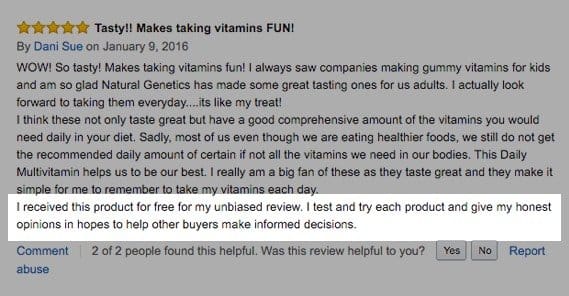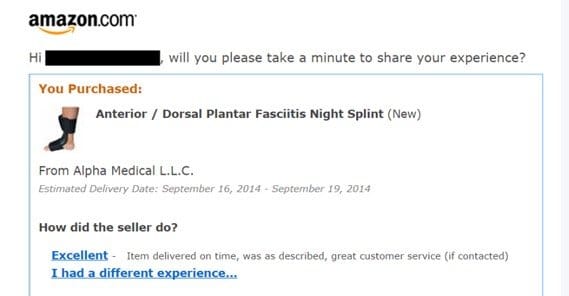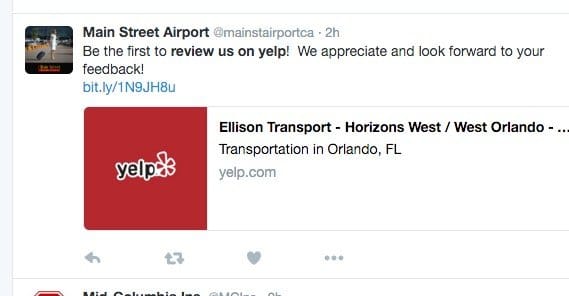9 Tricks to Get More Reviews on Your Product

“People influence people.” Mark Zuckerberg knows this very well, having based his entire platform around it. Nothing, he says, influences people more than the word of mouth recommendation from a friend.
That, in a nutshell, is what testimonial or review marketing is all about. Testimonials and reviews – slightly different, but I’ll use the terms interchangeably throughout this piece – are part of social proof. They’re extremely useful on landing pages and product pages, to help people make their decisions about buying a product.
First: The Difference Between Testimonials and Reviews
Testimonials are essentially just highly praising positive reviews. They come from anyone, but the only ones you tend to publish are the ones from industry figures and people with name recognition. For example, people who have a web app or a scalable software product that works for individual customers and enterprise-level businesses will probably include testimonials from the most recognizable businesses they have as clients.
A good landing page or sales page will have a small handful of potent testimonials prominently displayed. Testimonials are made to be used for marketing, rather than for general convincing, like reviews. A few targeted testimonials go a long way.
Reviews, meanwhile, will sit on product pages or on a dedicated reviews page, if you only have one product. They will be both good and bad, and you don’t want to censor the bad ones; that will be discovered fairly easily, and you’ll earn a bit of a negative reputation for it. What you want to do is allow users to post reviews, and solicit reviews from satisfied users, so that you end up with as many positive reviews as possible while minimizing negative reviews.
There are ways to minimize negative reviews that don’t involve censorship. One of the best is simply to reach out to customers who leave them and offer to go out of your way to help them resolve their issues. Good customer service plays a huge role in this. You can also dig into reputation management services if you have a lot of negative reviews around the web that need cleaning up.
Obviously, if you’re going to use reviews as part of your marketing, you’re going to want a lot of them. When I’m shopping around, I know that I don’t tend to trust a single review or a small handful; I look for products that are well reviewed in both the “mostly positive” and the “large numbers” senses. In fact, you might consider not displaying reviews publicly until you’ve solicited a decent number of them, though that’s not always feasible.
That’s part of why I put together this post. I’m providing some interesting techniques you can use to solicit and accumulate reviews, preferably positive, for your product or products. If you don’t have a product, and people will review your business as a whole, that’s fine too. In fact, it gives you more options, as you can end up with reviews on other sites, such as Facebook, Yelp, and the Yellow Pages
1. Offer Review Incentives
Just like contests and giveaways are great for getting more people to follow your brand on social media, they prove to be a great incentive for soliciting reviews as well. All you have to do is have an ongoing reward for people who leave reviews, and you’ll be able to watch them roll in. Some people will even make more than one purchase just for the additional chances to win.
There are two ways to go about this. The first is a sweepstakes, which you find for most restaurants and many grocery stores these days. Often, printed at the bottom of a receipt, is a survey code. These tend to be surveys about customer experience, satisfaction, product availability, and other business-guiding information. However, you can do the same thing with a simple review.
Ask users to leave a testimonial through your system, providing a code you give them in their purchase receipt to confirm they made the purchase, and they will be eligible for some amount of money in a gift card or store credit. I’ve seen anywhere from $20 to $1,000 on offer, though the higher end tend to be for large store chains that have plenty of cash to spare.
The other method is to offer a smaller gift to everyone who leaves a review. You might consider 5% or 10% off their next purchase a viable gift, and can even increase your prices a little to offset the costs. Users can leave a review to get a discount on their next purchase, and can chain these together as much as you see fit to allow them to do so.
2. Monitor Social Mentions
You can use a handful of different tools or something as simple as Google Alerts to set up branded alerts. The system will notify you when your brand name is mentioned but you aren’t explicitly tagged, like when someone posts about you on Twitter but doesn’t @mention you directly.
Some portion of these mentions will be people talking about your advertising. Some will be people talking about your products in a “I’m maybe going to get this, not sure” kind of way. Others will be direct reviews or mentions that they just bought your product. These are the ones you’re most looking for.
What you can do is reach out to those people and ask them if they would leave a more detailed review of your items on your site. “Hey, thanks for buying! We hope you’re well satisfied. Would you mind leaving a review here?” You don’t need to say much; just get people to come visit and leave a review.
This also allows you to curate your reviews without censoring them. When you see someone leaving an untagged mention in a negative review online, you don’t need to ask them to leave a real review; you can reach out to them to help them solve their issues.
The only hard part about this is making sure that the people you’re asking to leave a review haven’t already done so. You may have to do a little cross-referencing with your purchase records to see.
3. Send Follow-Up Emails
Most of the time, when a user buys something online, they need to plug in their email address. This allows you to put them on a mailing list, to send them a receipt and shipping confirmation, a shipping tracking number, and other purposes.
One of those other purposes is to solicit reviews. Wait a few days, a week, a month; however long you think it typically takes for users to get a robust experience with your product. I’ve seen Amazon send these sorts of emails after a couple of days, and I’ve had third party sellers via Amazon send them after a week or two.
The idea is to catch users when they’re satisfied with your product or have gotten their use out of it. You don’t want to send the message too early, or else people may not have gotten around to using the product yet. You don’t want to send it too late, or they may have used and forgotten the product and might not be as favorable.
A good follow-up email doesn’t just ask for a review; it becomes a comprehensive resource. You can provide user care, ask if they have any problems and provide a customer service contact, and ask for a review if they’re satisfied. One message, many purposes.
4. Include Solicitation in Point of Sale
A lot of business, particularly for service-oriented businesses and businesses with local dealings, don’t close their sales through an online order form. Rather, you close a deal with a handshake and a contract, a signature and a salutation.
In these cases, it’s hard to follow-up with a solicitation email, when email wasn’t necessarily part of the dealings at all. You can certainly ask for their email address, but I find that if it’s not by default part of business, people are very hesitant to give it over.
Instead, you should create a custom form that you can attach to contracts or receipts. It doesn’t need to be a detailed form, just a URL that points them to the review section and a solicitation.
As a bonus, you can add an incentive to this as per idea one. Print off a coupon that is good for their next purchase or next month of service, but require it be activated online, and gate that activation behind a review submission form. People are more likely to leave a positive or neutral review than a negative one when they’re claiming something.
Search Engine Land cites Ted Paff, CEO of CustomerLobby, when claiming that reviews solicited at the time of service or purchase can see very high completion rates. That number is 80-90%.
5. Provide Review Cards at Time of Service
This one largely only applies to service businesses, things like a cleaning service or a car detailing, something that is done in one visit or at one time and not on a subscription basis. You don’t want to give your customers a review card at the time they sign the contract, because it will be a while before they get to see the results, and they might forget about it by then. You also don’t want to contact them via email when everything else has been done in person; it takes away from that personal relationship.
What you can do, then, is create a small review card that you can then give to all of your actual service technicians, the people who go out and do the cleaning or the people who detail the car, and have them provide it upon delivery of your service. Leave one in the car that was detailed, give one along with a receipt packet or proof of service for cleaning.
Ideally, this card will have several ways to provide a review. You could have them submit it via mail with a postage-paid postcard. You can provide a URL for desktop users to leave a review, and a QR code so mobile users can use it immediately. If you’re feeling ambitious, you can even set up a phone-based system for reviews as well.
6. Run a Beta Test
Any time you’re developing a new product, be it a piece of software, an app, or even a physical product, you can solicit beta testers. These testers will get a prototype that you know will have bugs in it and might not function properly. That’s fine! The people who request beta access are likely going to be the kinds of people who are willing to forgive those bugs in an effort to help you create the product they want to see.
At the end of a beta test period, you can ask anyone who participated to rate their experiences. You can then use these as reviews on your future product page, though you may want to flag them as beta reviews specifically so that if they mention bugs that you fixed, future users won’t be confused.
Beta tests are going to get you some good reviews, but more importantly, they’re going to get you some very detailed insights into the sorts of people who use your products, the uses they want those products for, and the bugs they encounter. Through this combination, you’re able to perfect your product, and making a great product is one of the best ways to get a great review.
7. Offer Many Social Review Methods
There are an absolute ton of different social media sites people can use to leave a review. There’s the normal sites like Facebook, Twitter, LinkedIn, Google+, and YouTube. There’s sites like Quora and Yelp. There’s the Yellow Pages and other national directories. There are smaller local directories. There are also industry directories, like SpiceWorks and CitySearch.
The trick here isn’t to try to get users to review you on all of these. If you give them a card saying “please review us” and list 25 sites you want reviews on, you won’t get one. People don’t want to be presented with that many choices; they want a more or less linear experience.
Instead, what you need to do is simply claim your profile on each of these sites. Almost every review site out there will scour the web looking for businesses to add to their directory, because every one helps them rank for “X review” queries. However, they can only fill the profile with some basic information, which may be inaccurate and certainly won’t be kept up to date. What you do is claim the profile by proving you own the business, and then customize it with all of the relevant information. This helps users know they’re on the right business, and helps you accumulate reviews throughout the web.
8. Turn Reviews Into Testimonials
Sometimes, you’ll run into a glowing positive review that strikes the right balance between detail and praise, and you’ll want to use that review for other purposes. One thing you can do, then, is reach out to the user who left the review and ask them if they would be willing to write a more direct testimonial you can use in your marketing. This makes that user feel special, and it gives you a customized review you can use to convince other people to buy your product.
There’s not a lot to this trick; you just need to find high quality reviews that happen to be left by someone with some name recognition. You can reach out to them via the email address they have in your system, or via the contact information for their business or website. You can also do this when reviews are left on other sites; leave a comment or contact the user to get them to leave a review on your site as well.
9. Promote Blog Praise
Sometimes, particularly when you have a prominent web app or business software, bloggers will be a sizable part of your audience. These bloggers will likely want to write about their experiences with your software, because it’s something they use and it’s something that will get them some search engine recognition. You find these through Google Alerts and other mention monitoring, as mentioned earlier.
When someone blogs an article praising your product or service, feel free to drop them a comment thanking them for it. You can also, then, take an excerpt and use it as a testimonial. You can even send them a contact message asking for a review on your site as well, though again, you should make sure they haven’t already left one.
 ContentPowered.com
ContentPowered.com










